|
|
|
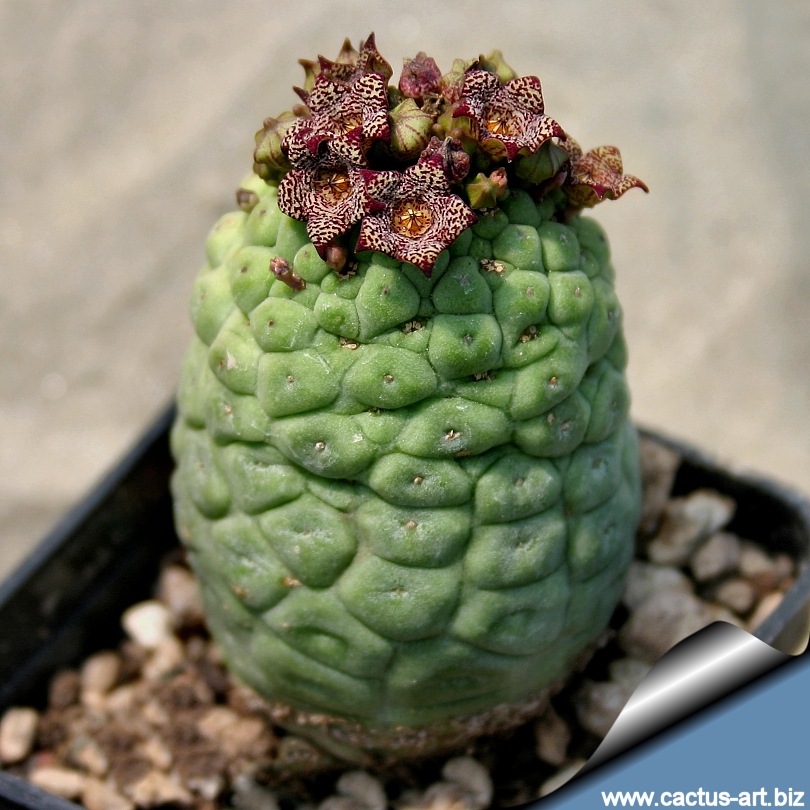
Flowers are sessile, fleshy and very variable in colour whitish cream,
green, yellow to dull pinkish uniformly coloured or maculate with
reddish, purple or maroon, and glabrous.
|
|
Description: Larryleachia cactiforme is
a small perennial
stem succulent mostly solitary (or slowly clumping). This species is
quite variable particularly in the colour of
flowers.
Stem: Globular to elongate, green or light green or blue-green
5-30 cm high, 20-60 mm wide, unbranched or sparsely branched short-cylindric,
and tessellate with roughly pentangular, flat or depressed tubercles
closely set together;
latex colorless.
Leaves: Persistent, reduced to scales, in spirals or
verticillate,
sessile (and sunken), strongly adscending, 0.05-0.1 cm long.
Roots:
Fibrous.
Flowers: Appear (usually) close to apex of stems in extra-axillary
inflorescences 1 to 3 together on a tubercle apex, each about 6 to 10mm,
in diameter, simple, sessile, fleshy,
abaxially whitish cream, green, yellow to dull pinkish uniformly
coloured or maculate with reddish, purple or maroon,
adaxially white, cream, green or yellow, maculate, glabrous.
Blooming season: Flowers open synchronously in summer. This plant has a highly specialized
pollination biology, that depends upon flies which are deceived,
partially trapped and used as collectors of the
pollinia which they transport to a cyathium (Flower) on another
plant.
|
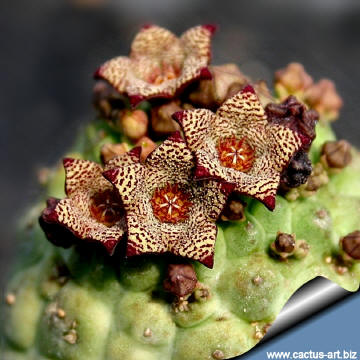 |
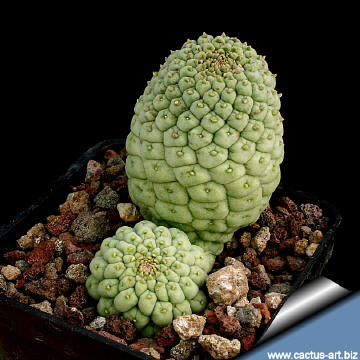 |
|
Cultivation:
Watering Needs:
Water
normally in the
growing season, dry in the winter.
Summer:
In the summer months they will grow well in
partial shade.
Propagation: Seeds.
Potting medium:
Since roots are quite shallow, use a
cactus mix or add extra
perlite or
pumice to regular soil
potting soil. A gritty, very free-draining
compost is suitable, and
clay pots help the plants to dry out between watering.
Propagation: Seeds.
|
|
Photo of conspecific taxa, varieties, forms and
cultivars of plants belonging to the
Larryleachia cactiforme
complex.
(This
Taxon
has lots of synonyms
whit several controversial varieties and subspecies):
|
|


Advertising
|
|
|
|
|
Family:
Asclepiadaceae (Apocynaceae)
(Milkweeds family) |
|
Scientific name: Larryleachia
cactiforme (Hooker) N.E. Br.
Origin: South Africa and Namibia
Habitat and biology:
It can be found on the eastern edge of the winter rainfall
region at an altitude of 800 - 1600 m. They are highly succulent
and adapted to very harsh and bright habitats. Larryleachia is a
very fine example of
convergent evolution, very easy to mistake for a cactus. However the
very similar development of very similar characters in plants evolving
in similar conditions although separated by very great distances or
otherwise impossible contact.
|
Synonyms:
- Stapelia cactiformis
- Trichocaulon cactiforme
- Trichocaulon meloforme Marloth
Published in: Trans. Roy. Soc. S. Afr 2. 239., 1912
- Larryleachia meloformis (Marloth) Plowes
- Lavrania picta (N.E.Br.) Bruyns subsp. picta
- Leachia meloformis (Marloth) Plowes 1992 (incorrect
name)
- Leachia picta (N.E.Br.) Plowes
- Leachiella meloformis (Marloth) Plowes
- Leachiella picta (N.E.Br.) Plowes
- Trichocaulon engleri Dinter
- Trichocaulon pictum N.E. Brown 1909
- Trichocaulon simile auct. - sensu Marloth
- Hoodia meloformis (Marl.) Halda 1998.a
|
|
|
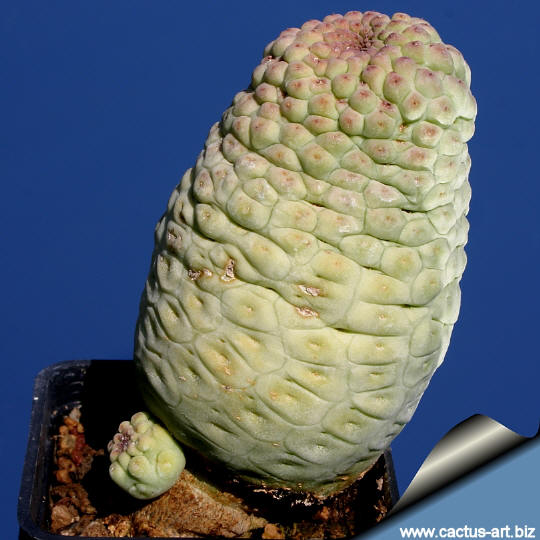
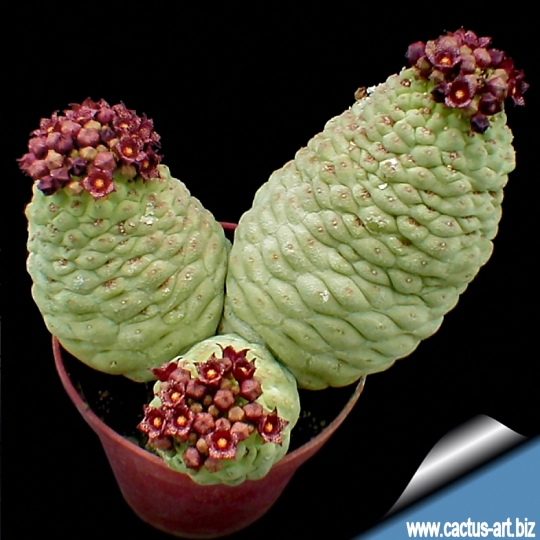 |
|
NOTE: Larryleachia cactiformis includes
the former Trichocaulon meloformis and Trichocaulon
engleri .
The genus Larryleachia was erected by Plowes in honour of Leslie
Leach, an English-born electrical engineer, self-taught botanist, and
specialist in Asclepiads and Euphorbias. This plant is perhaps best
known as one of the smooth-stemmed members of Trichocaulon, the
spiny stemmed species were combined with Hoodia, leaving the
former in need of a new generic home. The new genus Leachia was rendered
invalid as it had already been applied to a genus in the Asteraceae.
Realizing his error, Plowes chose a new name Leachiella. Despite
having checked as to the availability of that name no one realized until
after publication that it had been used before for a genus of red algae.
In 1997 it was finally designated as Larryleachia picta along
with several other smooth-stemmed species of the former Trichocaulon
genus, now the preferred designation among botanists today.
|
|